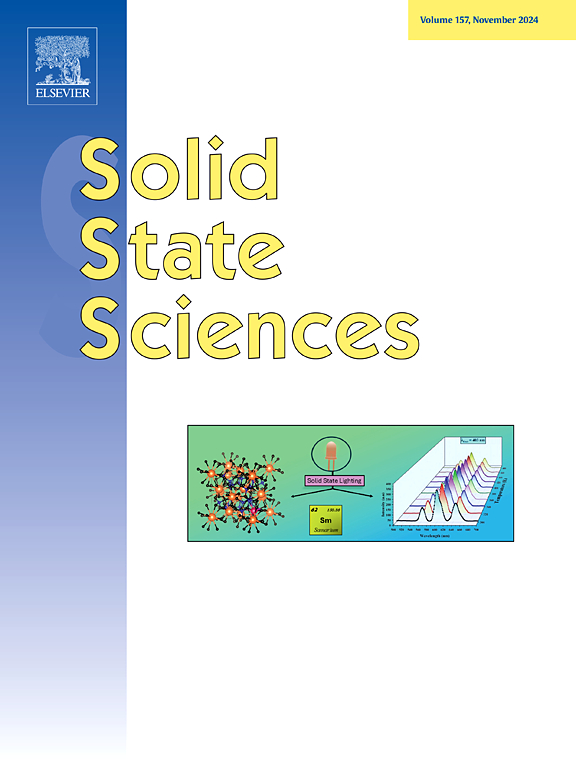Comparative analysis of g-C3N4 photocatalysts: Mechanisms of peroxymonosulfate activation for efficient pollutant degradation
IF 3.4
3区 化学
Q2 CHEMISTRY, INORGANIC & NUCLEAR
引用次数: 0
Abstract
The properties of graphite-phase carbon nitride (g-C3N4) catalysts, made of distinct precursors, exhibit significant differences in microstructure and photocatalytic performance. However, systematic studies on their effectiveness in activating peroxymonosulfate (PMS) for pollutant degradation remain limited. Three different kinds of g-C3N4 photocatalysts—CNM, CND, and CNT—were produced in this study by pyrolyzing melamine, dicyandiamide, and thiourea, respectively. Notably, CNM exhibited high crystallinity, reduced layer spacing, and abundant nitrogen defects, contributing to a decreased recombination rate of photogenerated electrons and enhancing its photocatalytic performance. CNM activated PMS with remarkable efficiency, accomplishing a degradation rate of 95.8 % in the PMS/Light system, significantly higher than when CNM and PMS were used separately. Quenching experiments indicated that the primary active species were superoxide radicals (•O2−), singlet oxygen (1O2), and photogenerated holes (h+) during degradation. Furthermore, CNM demonstrated excellent catalytic activity and stability across various pH levels and in complex environments with various inorganic anions, highlighting its strong resistance to interference. For developing low-cost and stable photocatalysts for organic wastewater degradation, this study presents an advanced approach.

g-C3N4光催化剂的比较分析:过氧单硫酸盐活化高效降解污染物的机理
不同前驱体制备的石墨相氮化碳(g-C3N4)催化剂在微观结构和光催化性能上存在显著差异。然而,关于它们在活化过氧单硫酸盐(PMS)降解污染物方面的有效性的系统研究仍然有限。本研究通过热解三聚氰胺、双氰胺和硫脲制备了三种不同的g-C3N4光催化剂cnm、CND和cnt。值得注意的是,CNM具有较高的结晶度、较小的层间距和丰富的氮缺陷,有助于降低光生电子的重组率,增强其光催化性能。CNM对PMS的活化效率显著,在PMS/Light系统中降解率达到95.8%,显著高于CNM和PMS单独使用时的降解率。猝灭实验表明,降解过程中的主要活性物质为超氧自由基(•O2−)、单线态氧(1O2)和光生空穴(h+)。此外,CNM在各种pH值和各种无机阴离子的复杂环境中表现出优异的催化活性和稳定性,突出了其强大的抗干扰能力。本研究为开发低成本、稳定的光催化剂降解有机废水提供了新的途径。
本文章由计算机程序翻译,如有差异,请以英文原文为准。
求助全文
约1分钟内获得全文
求助全文
来源期刊

Solid State Sciences
化学-无机化学与核化学
CiteScore
6.60
自引率
2.90%
发文量
214
审稿时长
27 days
期刊介绍:
Solid State Sciences is the journal for researchers from the broad solid state chemistry and physics community. It publishes key articles on all aspects of solid state synthesis, structure-property relationships, theory and functionalities, in relation with experiments.
Key topics for stand-alone papers and special issues:
-Novel ways of synthesis, inorganic functional materials, including porous and glassy materials, hybrid organic-inorganic compounds and nanomaterials
-Physical properties, emphasizing but not limited to the electrical, magnetical and optical features
-Materials related to information technology and energy and environmental sciences.
The journal publishes feature articles from experts in the field upon invitation.
Solid State Sciences - your gateway to energy-related materials.
文献相关原料
公司名称
产品信息
阿拉丁
Ethylenediaminetetraacetic acid disodium salt dihydrate
阿拉丁
L-histidine
阿拉丁
Tert-butyl alcohol
阿拉丁
Methanol
阿拉丁
Humic acid
阿拉丁
Sodium phosphate monobasic dihydrate
阿拉丁
Sodium bicarbonate
阿拉丁
Sodium chloride
阿拉丁
Potassium monopersulfate triple salt
阿拉丁
Thiourea
阿拉丁
Dicyandiamide
阿拉丁
Melamine
 求助内容:
求助内容: 应助结果提醒方式:
应助结果提醒方式:


